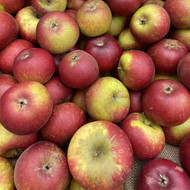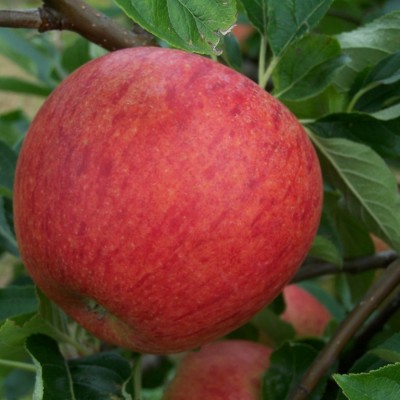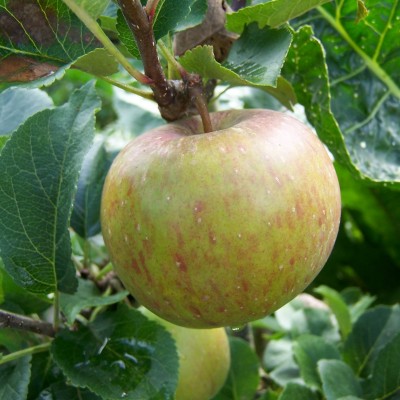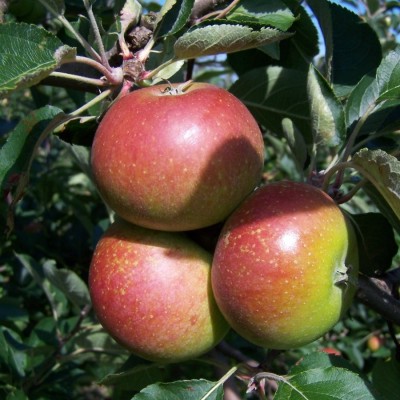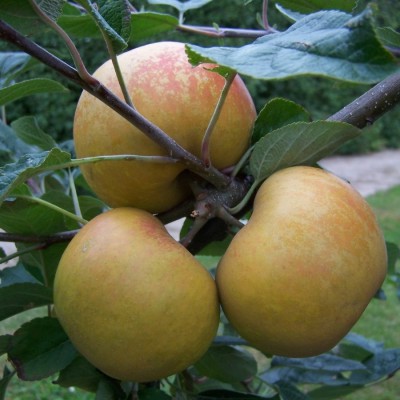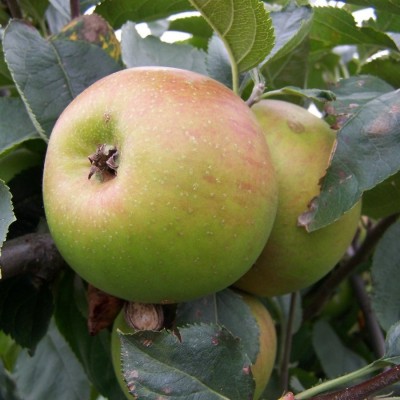Choosing a new apple tree can be a daunting experience. There are just so many to choose from! There are over 2000 varieties in the National Fruit Collection at Brogdale in Kent, and whilst many of these are extremely rare and not commercially available, here at RV Roger we provide a choice of over 240 different apples, all with their own unique qualities. So let's leave aside the intricacies of pollination groups, rootstocks and cropping periods and instead focus on the main quality which interests those of us who grow our own fruit – flavour!
The trouble here is that flavour is such a personal and subjective subject. What is delicious to one person well may be bland or nondescript to the next. A human has up to 10,000 taste buds on the surface of the tongue, mouth and throat and each of these has around 50 taste receptor cells which respond to chemicals in food and send signals to your brain. These combine with signals from your olfactory nerves (your sense of smell) to produce what we label as ‘Flavour’. The difficulty is that these combinations of receptors are as unique as your fingerprint – so no two people taste the same thing. And to further complicate matters, your sense of taste can change as you get older (one of the main reasons why ‘things don’t taste the way they used to’) or if you are unwell. So, recommending fruit for flavour is always going to be tricky.
Another issue is that it’s pretty much impossible to try many varieties before you decide. Supermarkets only stock the same 4 or 5 commercial apples, such as Pink Lady and Jazz, which fulfil their criteria- uniform fruit with a long shelf-life, and which can be grown around the world and offered 52 weeks of the year. Many of the best flavoured apples only have a short shelf life, are naturally uneven in appearance or don’t crop heavily enough for commercial growers. As home fruit growers, we aren’t bound by these constraints, but which one to pick? It’s a good idea to keep an eye out for local events held around National Apple Day - 21st October each year. RHS gardens, National Trust properties and other historic gardens will often hold tasting days, where it’s possible to try some of the more obscure varieties. At our own recent Apple Weekend we had over 60 varieties available to taste, and over 100 different varieties of eater and cooker available to buy as fruit. There is still the problem that on any one day, only a small percentage of varieties will be at their peak. The earlies might well have gone over, whilst the later types will still be tart and underripe. In the end, it may still be a shot in the dark, but any homegrown fruit will have a better flavour than anything you can buy in the shops - so go for it!
Here then, are my personal top six apples for flavour:
Charles Ross. An all-purpose apple, this is one of my early season favourites. Slightly less sweet than other popular early varieties such as Discovery, it has a refreshing balance of sugar and acidity, along with a slight hint of pear drops. It’s a very handsome apple - large and evenly shaped, almost like a child’s drawing of what an apple should look like - so does well on the show bench. It also cooks beautifully, keeping it shape, so makes a fine Tarte Tatin. The juice is aromatic and sweet. Truly one apple to rule them all!
Lord Lambourne. An old favourite, well known and widely offered by nurseries, for a very good reason - it’s one of the very best flavoured mid-season apples you can buy. Raised in 1907, its parents are James Grieve and Worcester Pearmain, so it is no surprise that the taste is divine. Juicy, sweet and aromatic, but with a nice ‘bite’, this is the one to go for if you like a supermarket Braeburn, only much much better. Compact in growth, frost resistant blossom and a heavy cropper, no wonder it has stood the test of time.
Suntan. After the war, the government research station at East Malling launched an intensive breeding programme to find a new and improved Cox’s Orange Pippin. They wanted to find a new variety which reinvigorate British apple production and be the new standard bearer for taste and flavour. Thousands of seedlings later, Suntan was the variety they selected and released with great fanfare. And it promptly failed to catch on. True, it does have a few drawbacks - it can be slightly prone to canker, and it is vigorous in growth. But my word, the taste is fantastic. Crisp and fresh, sweet but with a lovely hint of pineapple, it’s the one variety I seek out in late October from the fields here at the nursery. A hugely underrated apple.
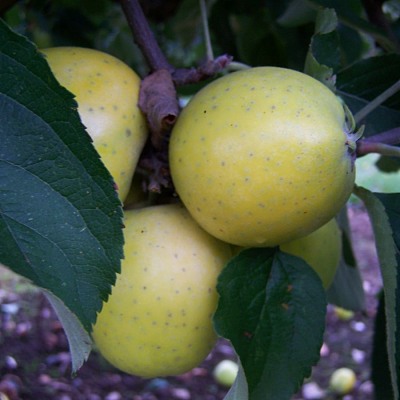
Ananas Reinette. It was a very close call between this and the more widely grown Pitmaston Pineapple. Both are small apples which are big on flavour, both have a sweet/sharp taste which fizzes in the mouth with a burst of pineapple tang. In the end, I choose Ananas Reinette as the fruit are slightly larger and the skin is a little thinner, but in truth both deserve a place in your garden if flavour is what you are looking for.
St Edmunds Pippin. Raised in Bury St Edmunds around 1870, this is my favourite russet. Ripening early for a russeted apple, around the end of September, this has the rich sweetness and depth of flavour of later russets like Egremont, but with a fine tender flesh - not at all coarse or ‘mealy’ like some of the others. The taste has been described as like pear flavoured vanilla ice cream, and I don’t think I can improve on that. The fruit can bruise easily, and it may not be the most attractive apple in the world, but for knockout taste, it’s hard to beat.
Orleans Reinette. Choosing a French variety may be seen as highly contentious in some quarters, but when an apple tastes this good it deserves to grown and appreciated more widely. Thought to have been in existence since the 1770’s, it has been grown in this country for well over a hundred years. Medium in size, they are distinctly flattened and have a large eye at the base. The flavour is a heady mix of orange and nuts - almost like Christmas in apple form - but also sweet and very juicy. One of the first varieties I ever planted in my own garden, and one I have replanted in every garden since. Exceptional.

